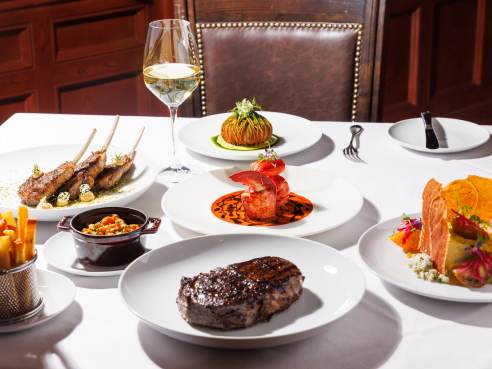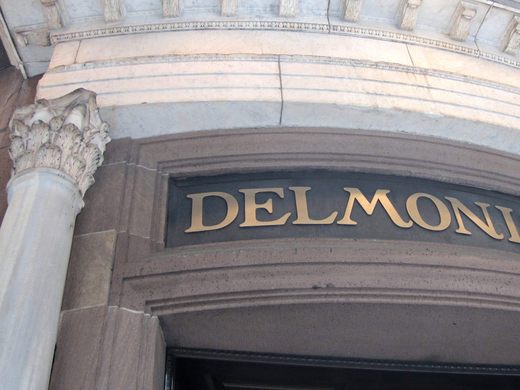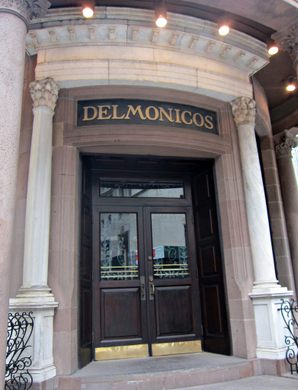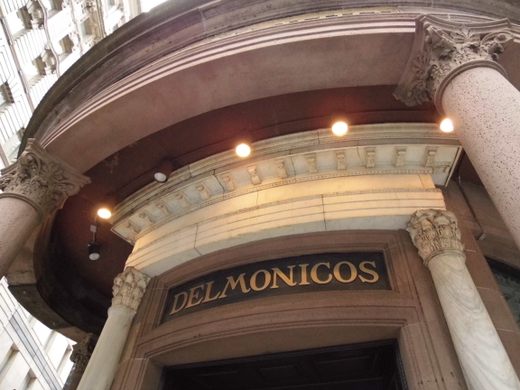


49
Delmonico's
Delmonico's

Delmonico’s in Fidi Goes Beyond Steak | Eater NY
"Billing itself as a steakhouse but historically much more, the restaurant has been creating now-classic dishes since opening as a pastry shop in 1827 and becoming a full-fledged restaurant by 1831, occupying its current corner at William and Beaver since 1837. One evening last week a friend and I visited, and on two other occasions we tried the Delmonico steak ($79)—an 18-ounce, thick, boneless cut that, if a rib-eye, was rounder than usual; it was medium-rare throughout, oozing pink juices, topped with crisp shallots, perfectly salted with a thick bark and a modest rim of fat, prime and wet-aged rather than dry-aged. The staff tries to upsell $6 sauces (kosho butter, Sichuan peppercorn, blue cheese), but I wanted the steak to taste like steak. We paired it with near-perfect hash browns ($18), a browned, chive-studded dome marred only by over-caramelized onions; lobster Newberg ($59) arrived as a modest portion in a cream–cognac–lobster coral bath nearly outshone by briny spaetzle; chicken a la Keene ($44) returned as a gussied-up version of the classic with multiple vegetables and a nicely done quarter chicken though comically large macaroni shells felt out of place; and the Baked Alaska ($24) was flambéed tableside but left the banana ice cream indistinct and the thin walnut cake nearly invisible, yet made an Instagrammable picture with apricot jam. The bar/lunch wagyu hamburger ($35) comes with brie remoulade, bacon, killer fries, truffle mayo—and now a bun. The restaurant recently reopened after a three-year COVID closure and an ownership battle, is now run by Dennis Turcinovic and Joseph Licul with Edward J. Hong as chef, and though we had no reservation we were shepherded through the dining room to a booth in the next-door barroom after entering through a wedge-shaped entrance framed by columns said to have been salvaged from the ruins of Pompeii. It's a New York classic, serving prime beef in old-time environs." - Robert Sietsema








































.png?w=88&q=75&f=undefined)




